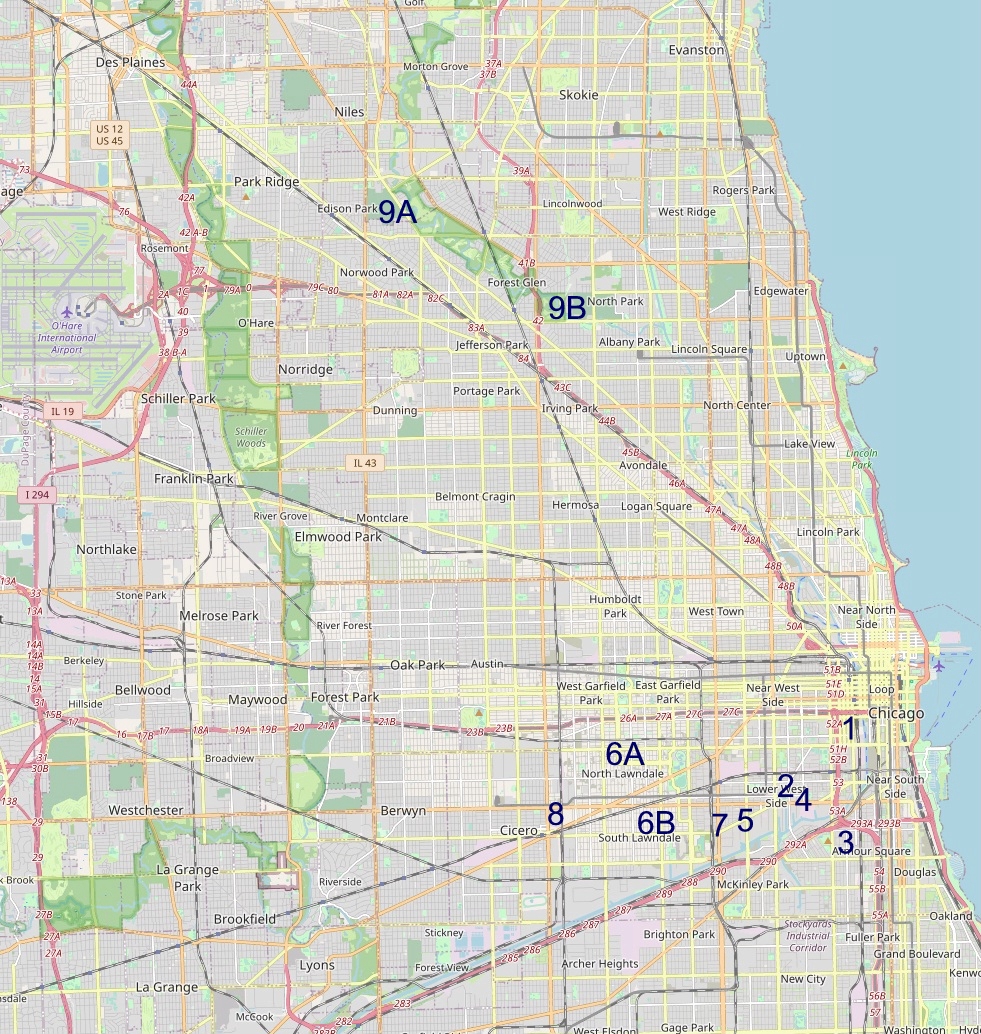Czech Spots
Chicago was incorporated on March 4, 1837. When the first Czechs, Slovaks, or Moravians would reach Chicago is still a topic of discussion and research. CSAGSI found information on examples of early arrivals. One article gathered information on several individuals who were here in the 1840's - https://csagsi.org/first-czech-in-chicago/. One article found a family in the Chicago area in 1852 - https://csagsi.org/stech-1852/.
Perhaps more important than discovering who was here first, is the story of the arrival of our ancestors and their early settlements and activities in our area. Our ancestors were organized and enlisted in the Civil War. They were moving together in the developing settlement areas close to current downtown Chicago. They were building churches and developing cemeteries, publishing newspapers and entering politics.
We have been gathering some information on early settlement communities of Czech immigrants, along with some early Czech churches and other locations for those of us interested in the areas of Chicago which first attracted those settlers and the buildings or cemeteries they established.
So far, we have nine:
1. Saint Wenceslaus Catholic Church - the first church established by the Bohemian community in Chicago. It survived the Great Fire which began just a block away and was finally demolished in 1955.
2. Saint Procopius Catholic Church - Perhaps the most famous of the early Bohemian Catholic churches. The source of many genealogy records we seek, and the home to many activities which took place in the Pilsen district. It exists today and survived a move from one corner to the other corner of the street.
3. Saint John Nepomucene Catholic Church - An early Bohemian Catholic church which was established as the Bohemians left their original settlement areas for new communities.
4. Thalia Hall - Located across from Saint Procopius........
5. Pilsen District - The Czech area of settlement which rapidly grew after the Chicago Fire. The district was once nominated for historical landmark status by the City of Chicago.
6. The North Lawndale and South Lawndale districts - Neighborhoods which developed and expanded as Bohemians continued to move outward from the city of Chicago. "Czech California" and "Bohemian Wall Street" were nicknames associated with these areas.
7. Saint Adalbert Catholic Church and Saint Paul Catholic Church - Established in areas with a large Bohemian population, but mostly for Polish Catholics. There is a Bohemian story connected to them.
8. Hawthorne Works - The giant complex of Western Electric, the work place of countless Czechs over the course of decades. Almost a city unto itself, now gone and replaced by a commercial development.
9. Cemeteries - Saint Adalbert Catholic Cemetery of Niles, Illinois and Bohemian National Cemetery of Chicago. Saint Adalbert was the first cemetery for Bohemian and Polish Catholics, established in cooperation between these two ethnic groups. The story of the establishment of Bohemian National Cemetery has a connection to Saint Adalbert's.
Maps:
All district boundaries (Pilsen, North Lawndale, South Lawndale) and all numbers indicating other specific map locations are approximate. The maps for districts and all other locations were created using: OpenStreetMap® is open data, licensed under the Open Data Commons Open Database License (ODbL) by the OpenStreetMap Foundation (OSMF).
The district boundaries and specific map locations were approximated and based on other maps found online:
www.xipdatamaps.com
GIS information services from www.chicago.gov
https://en.wikipedia.org/wiki/North_Lawndale_Chicago
https://en.wikipedia.org/wiki/Sorth_Lawndale_Chicago

